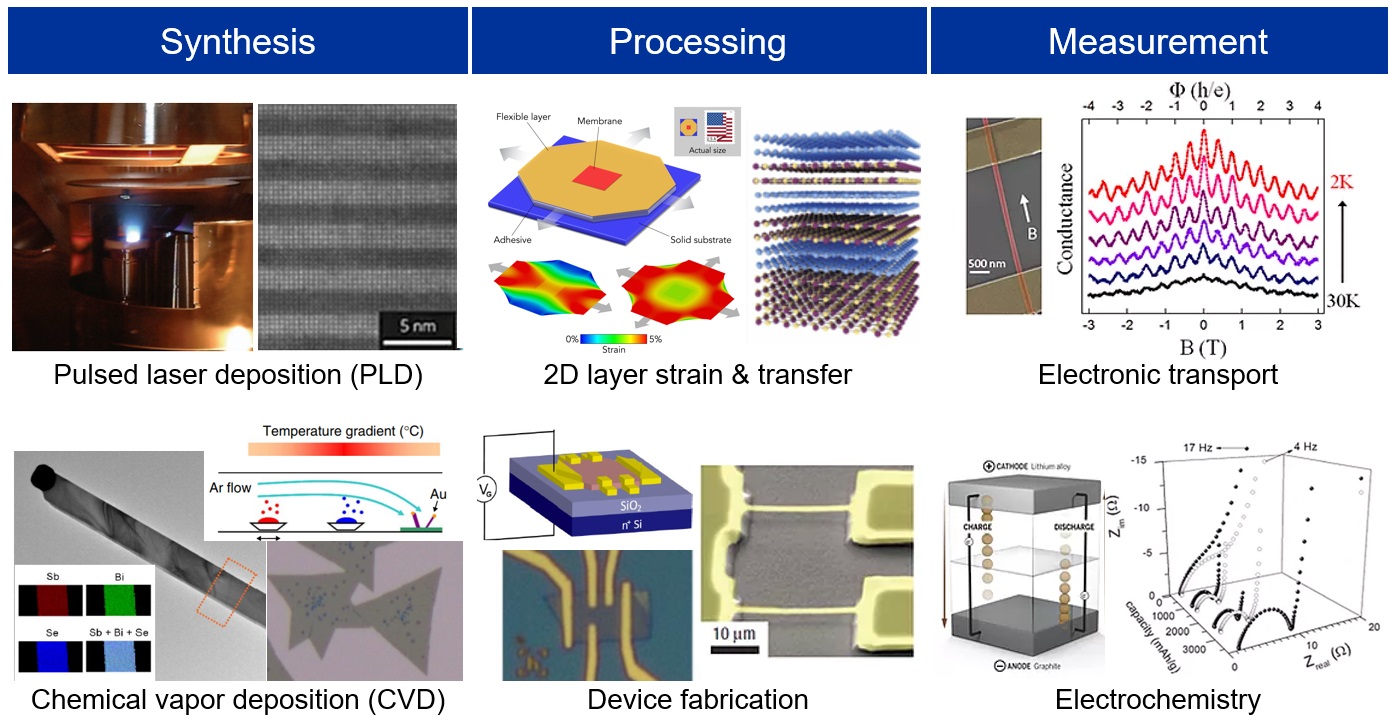
The atomic-scale materials design is the starting point of our research. We synthesize complex oxide thin film heterostructures & freestanding membranes (Pulsed laser deposition, PLD) and layers of metal chalcogenides (chemical vapor deposition, CVD), which can be further manipulated and assembled into devices. By employing electronic transport, microscopies, and spectroscopic tools available in our group (and via collaborations), we aim to answer unsolved questions in condensed matters as well as exploring new applications.

Unconventional strain states in quantum materials
Control of atomic spacing is of fundamental importance to design materials and their properties. Quantum materials, where electrons and their interactions are coupled to the lattice, have exhibited a variety of strain-tunable ground states and functionalities. Because of the mechanical flexibility of 2D materials, we can extend the range of lattice control beyond thin film epitaxy and bulk crystals. By designing unconventional strain states, of which magnitudes & directions are freely chosen, we seek to explore new phase space previously inaccessible.
2D heterointerfaces
The famous quote from Nobel laureate Herbert Kroemer, “the interface is the device,” represents semiconductor heterostructures at the foundation of current information technology. Beyond the silicon industry, now we are witnessing an explosion of research on artificial 2D interfaces created either by thin film epitaxy or mechanical stacking. We are particularly interested in combining two families of materials: 1) complex oxides decorated with many exotic electromagnetic phases and 2) van der Waals materials where mesoscopic electron transport is largely accessible. Understanding how different physical properties transcend across interfaces will guide us to predict/design collective behaviors in solid state systems.
2D materials for energy science
Many quantum materials are great energy materials as well. Especially complex oxides are known as promising catalysts for reactions involving oxygen molecules. Our group focuses on the electrochemistry of 2D oxide materials synthesized with atomic precision. By employing materials design strategies – heterostructure, strain, orbital engineering – developed in condensed matter physics, we seek to understand the correlation between the energy conversion efficiency and the structure & electronic properties of the materials.